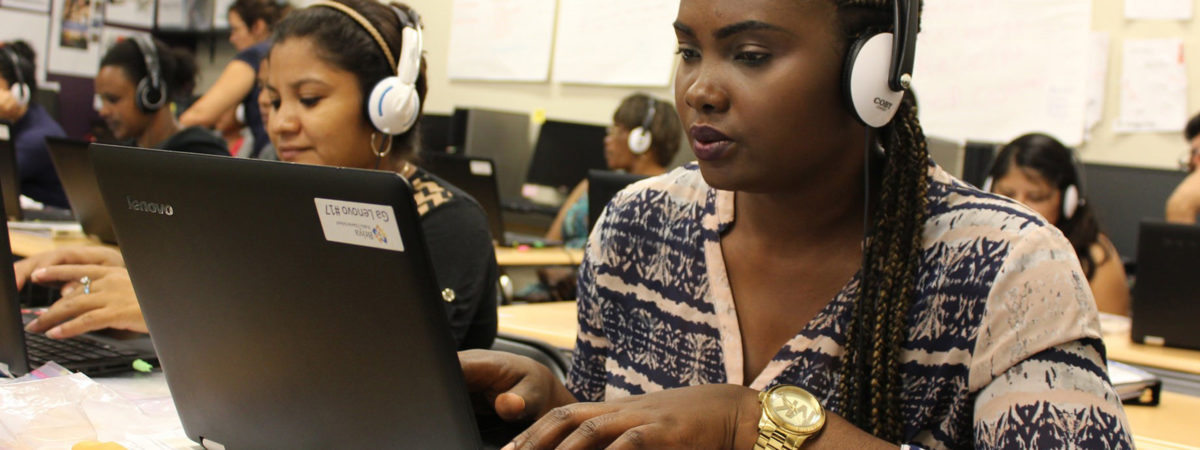
February 8, 2021 | By Rachel Besharat Mann, PhD
Researchers have deeply explored digital literacy in recent years, with many different frameworks for skills and strategies emerging. Researcher Yoram Eshet developed an evolving taxonomy of the many skills needed to be digitally literate beyond the understanding required for basic access to various technologies. As new technologies are typically highly visual, understanding graphic layouts (and how to interact with them) is essential. Having photovisual skills helps technology users make sense of digital environments. These skills also aid users in reproducing and creating their own multimedia, including digital writing using online sources and using online visuals across a variety of projects. Research has shown that adults who have had limited experience with digital environments can build their understanding of online photovisual layouts through practice and guided instruction.
Also vital to digital literacy is the ability to comprehend digital texts, which differs from traditional paper-based reading. Digital texts are often visually different and contain hyperlinks to access multiple texts, which requires increased cognitive flexibility to navigate. The ability to efficiently navigate hyperlinked texts, or branching literacy, builds upon foundational reading skills as those who have higher comprehension offline typically maintain these skills in online environments. Similarly, those with poor offline reading skills tend to struggle with digital texts as well. Online sources also require the ability to discern fact from fiction, or information literacy skills. Information evaluation is part of overarching critical thinking skills that are essential for solving complex problems in and out of the workplace. This is particularly important in social media environments as information spreads quickly without verification. Direct instruction, modeling, and guided practice can help adults learn these skills and build the appropriate background knowledge.
Cognitively, navigating digital technologies requires real-time thinking skills, including working memory, which help individuals process large amounts of information at once. In work spaces, this can mean using various office software at once to complete a project in addition to leveraging online sources. These skills require the ability to multitask and attend to various media at once. Working in quiet spaces with minimal outside interruptions can help learners focus their attention on a specific task and avoid distractions online such as ads and opening other programs.
There are a multitude of social and emotional skills that support digital literacy, which are particularly useful when navigating social media platforms. Understanding digital etiquette and the potential consequences of posting information online helps to keep individuals safe and to reduce social confusion. Adults typically learn these skills through experience with these platforms and by seeing positive models for online behavior. Unfortunately, they also can learn by making mistakes and dealing with the ramifications. When individuals have supportive networks to discuss these types of environments and to provide immediate feedback on online behavior, individuals build social digital literacy and can avoid some of these mistakes.
Common across all of these skills is the significance of direct instruction and support networks. Instructors, trainers, and peers can all positively contribute to adults’ digital literacy skills when they explain and model different skills in an open and low-stakes environment. For adults who may be struggling in digital spaces, social support from friends, family, and colleagues can be effective, particularly for older adults who may lack experience with technology. This support can also minimize frustration and help ease any anxiety surrounding the use of technology. Finally, inviting adults to immerse themselves in authentic experiential practice using digital technologies has been shown to be effective in boosting overall digital literacy.
To learn more about how to support the whole learner, explore the factors and strategies in the new Learner Variability Project Adult Learner Model or sign up here for our newsletters.
By Lauren McMahon and Heather Dowd